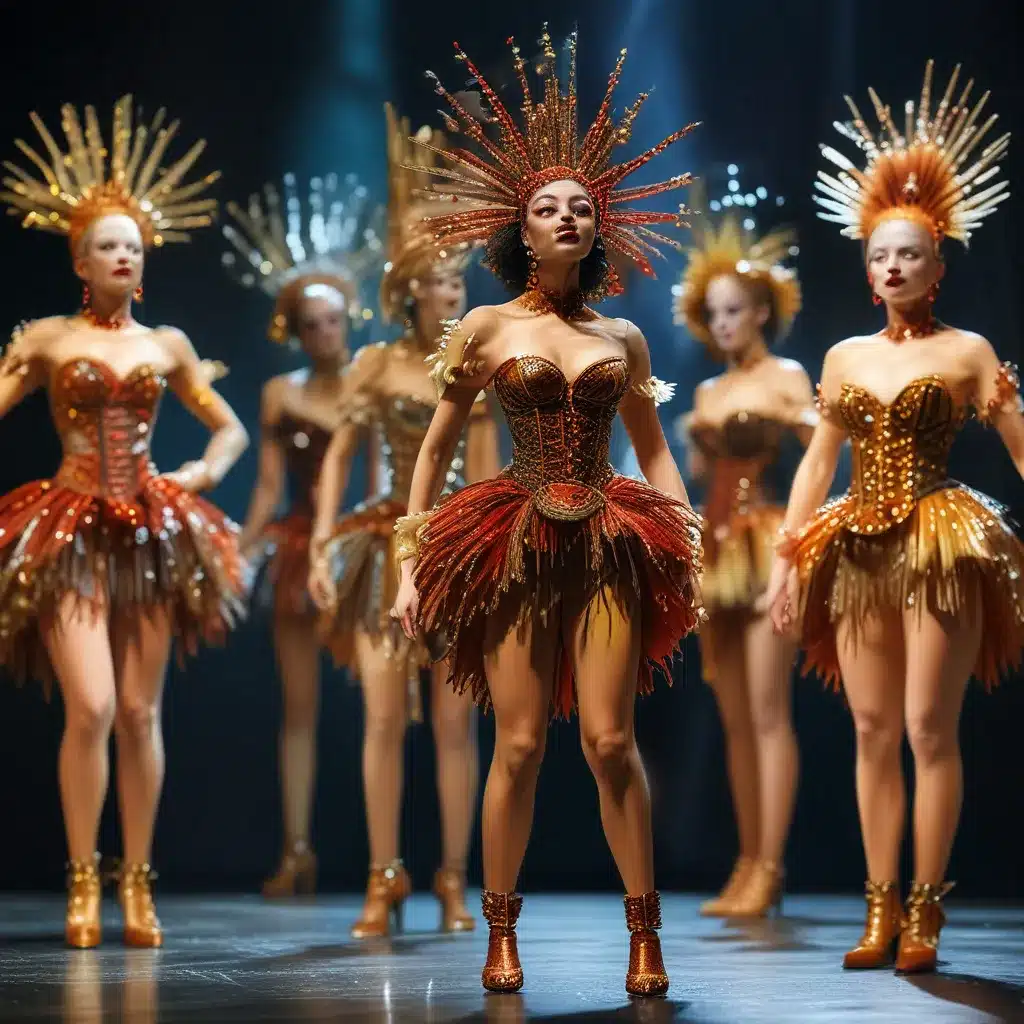
As a lifelong theater enthusiast and self-proclaimed costume aficionado, I’ve always been fascinated by the power of fashion to transform a performance. From the glittering gowns of Broadway’s golden age to the avant-garde ensembles gracing stages today, costume design has the ability to transport audiences, evoke emotion, and elevate the overall theatrical experience.
Recently, I had the opportunity to sit down with the team at the Musical Theater Center, a renowned hub for education, innovation, and performance in the world of musical theater. During our discussion, we explored the latest trends and innovations that are redefining the role of costume design in this dynamic art form.
The Rise of Sustainable and Ethical Costume Design
One of the most compelling trends I’ve noticed is the growing emphasis on sustainable and ethical costume design practices. As the world becomes increasingly conscious of our environmental impact, the theater community is rising to the challenge, pioneering new approaches that prioritize sustainability.
According to John Harvard’s Journal, many costume designers are now opting for upcycled and repurposed materials, breathtaking creations crafted from discarded fabrics and found objects. This not only reduces waste but also imbues each piece with a unique character and story.
Take, for instance, the recent production of “The Lorax” at the Musical Theater Center. The costume designer, a passionate advocate for environmental conservation, collaborated with a team of local artisans to craft the iconic Truffula tree costumes entirely from recycled plastic bottles. The resulting ensemble was a vibrant, whimsical celebration of nature, capturing the essence of the Dr. Seuss classic while simultaneously raising awareness about the pressing issue of plastic pollution.
Technological Advancements and the Future of Costume Design
But the innovation doesn’t stop there. As Harvard Magazine points out, the theater world is also embracing the power of technology to revolutionize costume design. From 3D-printed accessories to cutting-edge projection mapping techniques, the possibilities are endless.
One particularly captivating example is the use of programmable LED fabrics, which allow costume designers to imbue their creations with dynamic, ever-changing visuals. Imagine a dancer’s dress that pulses and swirls with mesmerizing light patterns, transporting the audience to another world with every graceful movement.
The Musical Theater Center has been at the forefront of this technological revolution, hosting workshops and masterclasses that explore the intersection of fashion, technology, and performance. As I wandered the center’s state-of-the-art design studios, I was awestruck by the team’s innovative spirit and their unwavering commitment to pushing the boundaries of what’s possible.
Bridging the Gap Between Fashion and Theater
Another intriguing trend I’ve observed is the growing collaboration between the worlds of fashion and theater. As the lines between these creative disciplines continue to blur, we’re witnessing a rich cross-pollination of ideas and influences.
Fashion designers, eager to expand their reach and experiment with new mediums, are increasingly turning to the stage as a canvas for their artistry. Iconic luxury brands like Chanel and Dior have lent their bold, visionary aesthetic to high-profile theater productions, captivating audiences with their sartorial brilliance.
But the exchange goes both ways. Costume designers, renowned for their technical mastery and keen eye for storytelling, are also making their mark on the fashion industry. Brechtian acting techniques, with their emphasis on authenticity and emotional resonance, are inspiring fashion brands to rethink their approach to garment design and presentation.
At the Musical Theater Center, this cross-pollination is celebrated and nurtured. The center’s fashion and theater programs work in tandem, collaborating on innovative projects that challenge conventional boundaries. I had the opportunity to witness one such collaboration firsthand – a stunning runway show that blended couture gowns with cutting-edge stage technology, resulting in a mesmerizing display of sartorial and dramatic artistry.
The Power of Costume to Shape Character and Convey Emotion
Of course, no discussion of costume design in musical theater would be complete without acknowledging its fundamental role in character development and emotional storytelling. As I delved deeper into the center’s archives and interviewed their esteemed faculty, it became clear that the choice of costume can make or break a performance.
A well-crafted costume has the power to instantly convey a character’s personality, social status, and even their inner emotional state. Consider the striking contrast between the simple, understated elegance of Eliza Doolittle’s flower girl dress and the ostentatious, bejeweled gowns of her socialite counterparts in “My Fair Lady.” These costumes not only reflect the characters’ outward appearances but also serve as a powerful visual metaphor for their journeys of transformation and self-discovery.
Similarly, in the recent production of “Hamilton” at the Musical Theater Center, the costume design played a crucial role in distinguishing the various historical figures and their shifting alliances. The bold, military-inspired outfits of the Founding Fathers stood in stark contrast to the softer, more feminine silhouettes of the women, reinforcing the power dynamics and gender roles that shaped the narrative.
The Future of Costume Design in Musical Theater
As I bid farewell to the Musical Theater Center, I couldn’t help but feel a sense of excitement and anticipation for the future of costume design in this dynamic art form. The trends and innovations I’ve witnessed here are just the beginning, a mere glimpse into the boundless potential of this vibrant industry.
Whether it’s the continued embrace of sustainability, the integration of cutting-edge technology, or the ever-evolving dialogue between fashion and theater, one thing is clear: the role of costume design in musical theater is poised to become increasingly central and transformative.
As the curtain rises on the next generation of theatrical masterpieces, I can’t wait to see how the costume designers of the future will captivate, inspire, and challenge audiences with their visionary creations. The stage is set for a future that is undoubtedly Fashion Forward.

